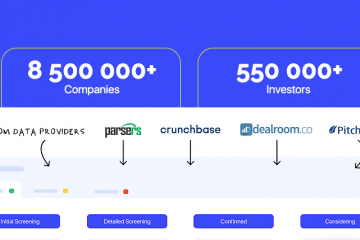Eco-Big Data in the big city: how technology makes the metropolis cleaner
Digitalization is possible not only in enterprises. Digital transformation is catching up even with cities to make them more convenient for residents and less harmful to the planet. How to quickly monitor garbage cans, the state of forest parks, cycling and air purity with the help of big data, machine learning and the Internet of things?
The Internet of things to manage garbage
In Barcelona, which is considered one of the most advanced cities in terms of technical equipment and convenience of urban infrastructure, the use of big Data and Internet Of Things technologies in garbage containers has significantly improved the environmental situation. Special ultrasonic sensors installed in containers determine the degree of their fullness. By Wi-Fi information is sent to the information system of public services, which are responsible for garbage collection. On the basis of these data, workers effectively plan their routes and promptly empty the filled garbage cans.
Thus, the introduction of technologies has brought the following positive results:
- optimization of the routes of garbage trucks;
- reduced garbage collection time;
- save money of fuel consumed by machinery when the rubbish collection;
- reduction of emissions of harmful substances into the atmosphere.
Smart trash can with IoT sensors makes the city cleaner, saving time and money
However, modern garbage containers can not only report the filling, but also deal with the waste themselves. For example, in new York, Geneva, Dublin, as well as some other cities in Europe and the United States, high-tech urns are installed, which independently press garbage and pack it. The approximate cost of one urn is about $4,000. Thanks to these devices, Philadelphia was able to reduce the number of garbage collection flights by almost 8 times: from 17 to 2.
Big data, the Internet of things and machine learning for city parks care
Thanks to the information system based on Machine Learning, which analyzes large data on the state of 2.5 million trees growing in new York parks, it was possible to reduce the number of cases of emergency exit to the places of the fall of large branches by 22%. For example, in 2009-2010 only in Central Park 4 people were injured because of falling branches. Now the program based on big Data technology calculates a regular schedule of pruning and care for large trees, which significantly reduces the risks of damage from storms and strong winds. Similarly, machine learning and the Internet of things (in the form of drones) are used in Switzerland to examine cavities in trees, as well as to study forest parks in Finland and Japan, as we discussed in detail here.
Big Data in Bicycle rental systems
Thanks to a combination of technologies such as Big Data, Machine Learning and Internet of Things around the world, the share of urban cyclists is increasing. For example, since 2005 in Paris there is a system of bike sharing, so that any tourist and citizen can choose a convenient point of bike rental. Sensors installed on each bike Park transmit data to the system about the number of devices available for rental and the number of free Parking spaces. All this is quickly displayed on the interactive map of the city website. This increased the popularity of Cycling, improving the road and environmental situation in the metropolis.
Other cities and countries after the successful example of Paris also implemented a similar system based on Big Data and the Internet of Things.
Smart bike Parking with IoT-sensors will help you quickly find eco-friendly transport for the metropolis.
Machine Learning for environmental monitoring
To monitor and analyze the level of urban air pollution in Sydney, 14 special IoT sensors are installed, which collect large data on the state of the atmosphere and transmit them to the system of the National ICT center of Australia (NICTA) and the Department of environmental protection of New South Wales (NSW EPA). Machine Learning methods and prediction algorithms process this information and calculate the air quality index for the next day. Based on this indicator, the system predicts the level of air pollution for the next 24 hours in different parts of the state. This information allows residents and industrial enterprises to assess air quality and take measures to improve it.
A similar project is planned to be implemented in Chicago so that street sensors measure temperature, humidity, air pollution, heat and wind. The obtained data will be used by big Data analysts and specialized specialists to study the environment in the city and promptly solve local environmental problems, as well as taken into account when planning the construction of new residential and industrial neighborhoods.


